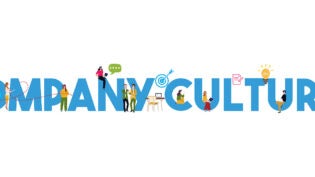How to Foster a Company Culture That Values Creativity and Innovation
By: YEC

As a startup founder and investor, it’s not enough for me to merely value innovation and creativity: I must also manage the hazards associated with new ideas. After all, employees who routinely bring novel ideas to their colleagues are likely to experience more rejection, failure, and even embarrassment than others in their career. The question is, how do you encourage your team to innovate despite the risks?
Ultimately, I’ve learned that my personal values alone can’t create a robust culture of innovation. For example, at my company, a social media editor recently started noticing a persistently dismissive attitude coming from certain quarters regarding her collaborative projects. In one extreme case, she was mortified when a project (a stylized promotional video) was scrapped over what boiled down to the employee’s editing choices. Team members lambasted the video, getting it pulled without offering constructive criticism beforehand.
Imagine if that were our response to every lost sales lead or dip in quarterly performance. It would be both paralyzing and counter-productive.
In the workplace, encouraging creative problem-solving is far easier in theory. By taking the needed steps to alleviate any overpowering fear of failure, you can steer your team onto the right path. Here’s what I did to turn our office culture around and encourage employees to share their ideas without worrying about rejection.
Lead by Consensus: Put Feedback on the Meeting Agenda
My team used to email one another to get feedback. Besides being inefficient, emails offered an easy out for those who preferred to avoid confrontations. Ironically, this silence only increases the risk of failure and can still hurt feelings. To nip this communication method in the bud, we’ve placed all projects on the weekly meeting agenda to mandate those uncomfortable conversations. There are now face-to-face discussions about each project, which makes the office a safe space for critical engagement with one another. This in turn also produces shared clarity on project design and purpose while generating ideas for improvement and greater results. And with more engagement comes more shared responsibility for both successes and failures.
Have the Last Word
Another barrier to direct critical feedback among team members was my own presence. I’m less risk-averse than most, yet my very vocal feedback made some team members too reliant upon me to catch every possible pitfall. Given my position and involvement, it was easy for team members to bring their concerns to management rather than have that possibly awkward dialogue with the project leads themselves. Now, my silence during meetings opens the door for the voices of other team members. Of course, I maintain the last word at every step of the process, but the emphasis is on last — and that makes all of the difference.
Make the Non-Starter a Conversation Starter
Most off-the-wall ideas never get implemented, so giving a constructive response to unviable suggestions early on can help your team members come up with more effective plans in the future (as opposed to shutting down their creative thinking). It’s critical that everyone has an evolving understanding of company goals, priorities and resources. At TalkLocal, we now deliver more frequent and detailed reports on our analytics, resource allocation, and where improvement is most needed. As a result, team members feel more empowered to offer informed feedback, and rather than falling silent, they are ushered towards a new way of critical thinking that allows them to produce more sophisticated and viable ideas over time.
Highlight the Anonymous Idea Box
As employees grew more seasoned, I saw fewer of those enthusiastic but naive suggestions, which was a problem in and of itself. In order to encourage new employees to not fall into a similar trap, we decided to dust off our suggestion box and encourage the team to bring up and discuss any anonymously submitted ideas. Through this process, we’re bringing new employees into our growing culture of innovation, while still helping them shape their thinking as they grow with the company.
Today, our social media editor remains creative, recently reducing our e-marketing costs while increasing click rates through better targeting, proving that one success is worth a dozen failures. Furthermore, not a day goes by that a team member doesn’t propose a way to change the company for the better — which makes us better regardless of whether the idea is implemented or not. As the inherent value of an innovation-powered workplace continues to energize and inspire our team, I’m confident that our tangible value will continue to grow as well.
Author: Manpreet Singh is Founder and President of TalkLocal, a home services marketplace that turns online service requests into a live conversation with the right available business in minutes.












